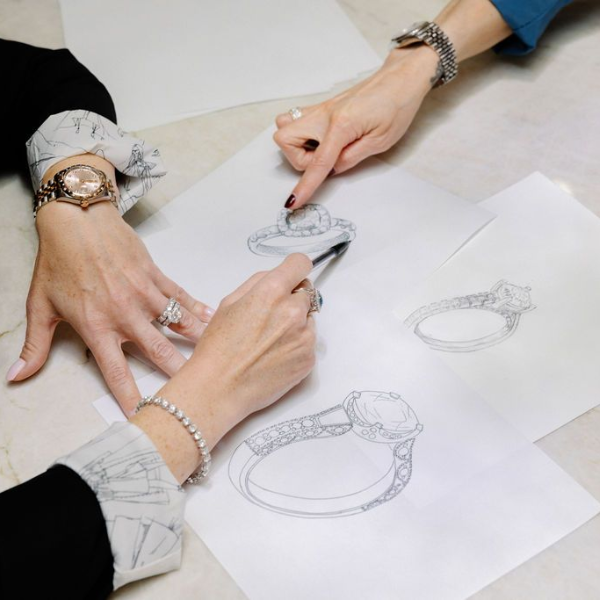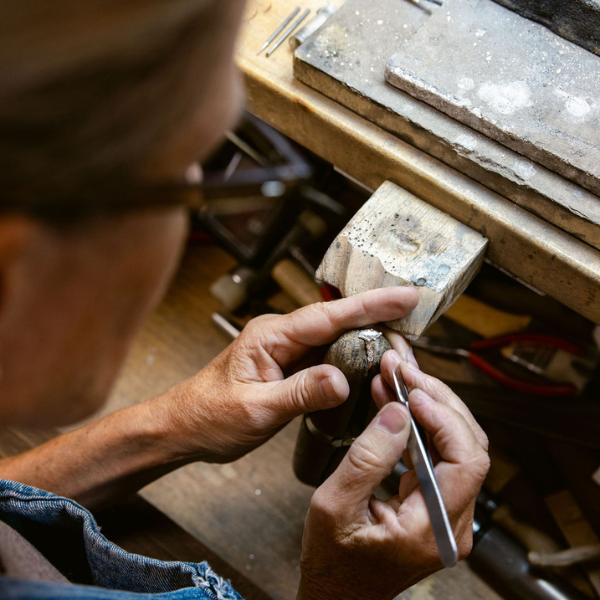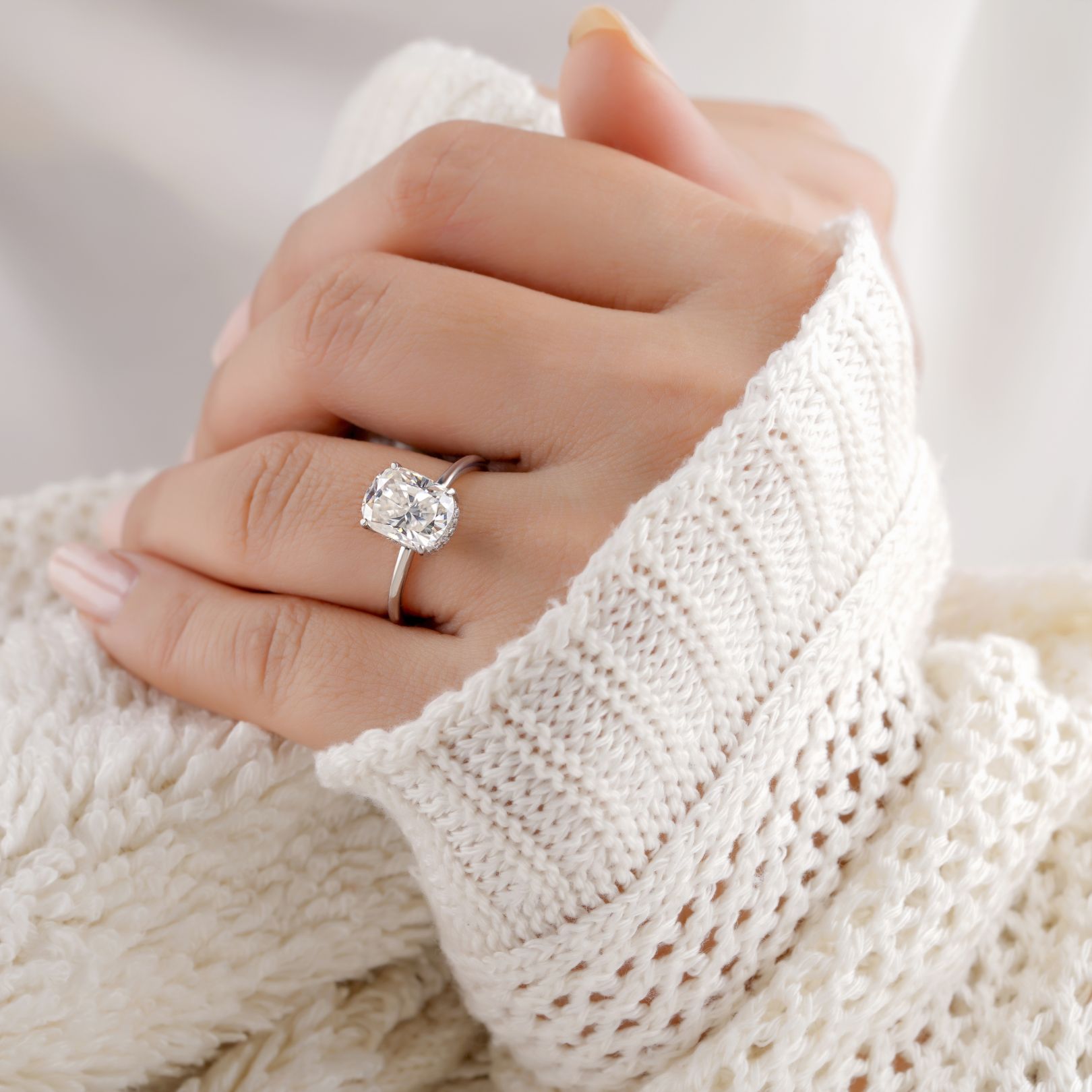These dazzling gemstones have gained popularity in recent years due to their combination of striking beauty and friendly price point. To the naked eye, natural mined diamonds and lab diamonds are extremely similar, with lab diamonds even being able to pass a diamond tester! Talk about a carbon copy! Okay enough with the diamond puns...
Lab-grown diamonds (also known as lab-created diamonds, man-made diamonds, engineered diamonds, and cultured diamonds) are generated in highly controlled laboratory settings using advanced technological processes that mimic the conditions that diamonds naturally develop in when they form beneath the Earth's crust in the mantle.
These lab-created diamonds are made up of genuine carbon atoms organized in a diamond crystal structure. They have the same visual and chemical qualities as natural diamonds (down to the atomic level) since they are manufactured of the same substance, carbon!
So, grab a cup of coffee or your favorite beverage, and let's dial in to this captivating journey through the scientific process of creating lab-grown diamonds. I hope you are just as excited as I am to learn how to grow diamonds!
By the end of this blog post, you'll be well versed in the incredible process involved in growing diamonds in the controlled environment of a laboratory. 6 steps to creating a lab grown diamond here we come!
Step 1: The Seed
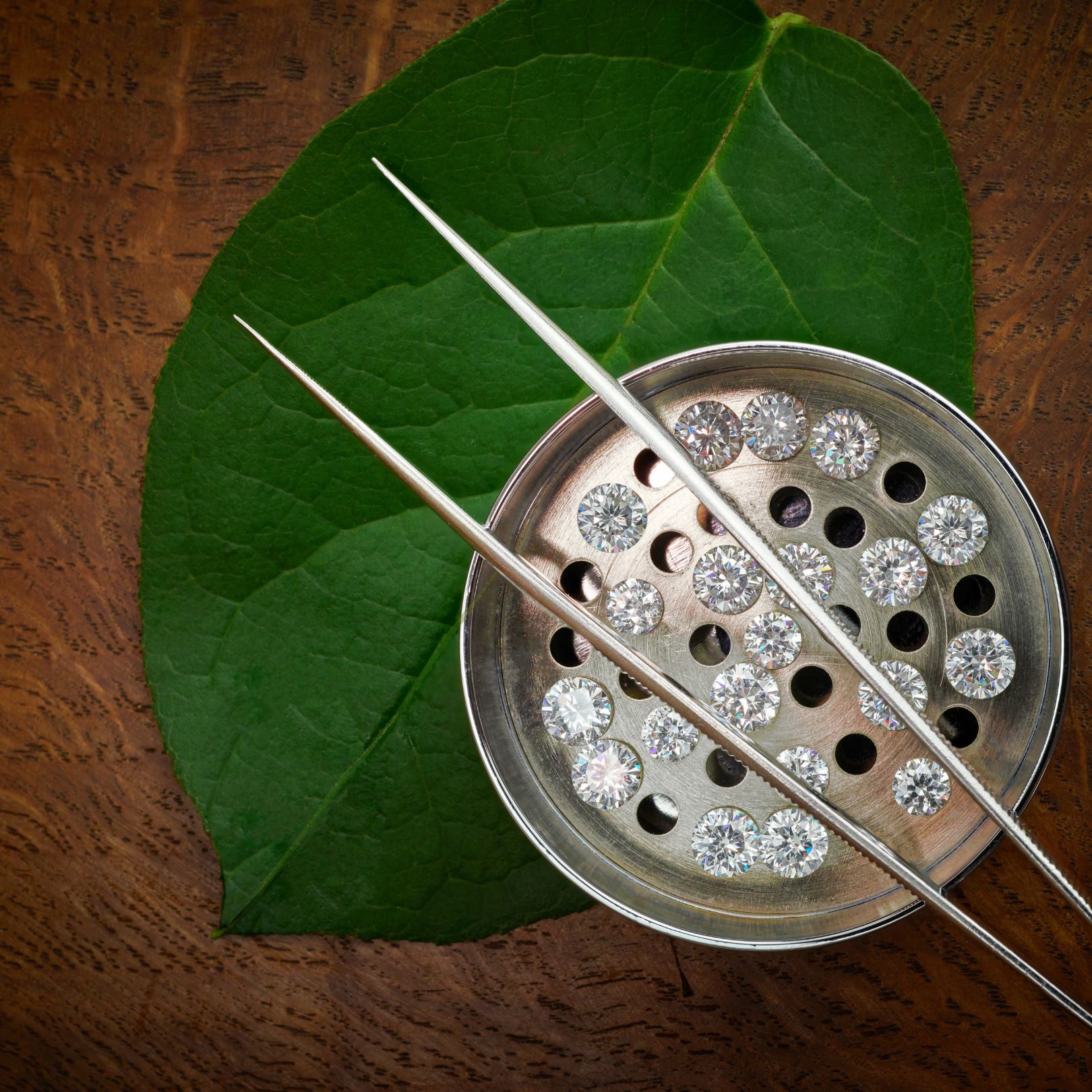
Every diamond needs a seed to grow, just like a plant needs a seed to sprout. The tallest trees in any forest started out as the smallest acorns you can imagine, and the same is true about diamonds. In the case of lab-grown diamonds, this seed is a small diamond fragment or a carbon source. Known as the "diamond seed," this is the foundation upon which the entire growth process depends. The diamond seed is placed in a specialized chamber, often made of high-pressure, high-temperature (HPHT) equipment or a chemical vapor deposition (CVD) reactor. Both methods have their unique advantages, but the outcome remains the same: a controlled environment to encourage diamond growth.
Step 2: The Growth Atmosphere
Creating an environment conducive to diamond growth is essential for the success of the lab diamond process. In the HPHT method, the chamber is filled with a small diamond seed, a mixture of carbon source material and a catalyst (think of it like a spark plug to a car’s engine), which kickstarts the growth process. The chamber is then heated to extremely high temperatures, just like what would happen deep within the Earth's mantle where natural diamonds form over billions of years.
Since I am a sucker for a good visual aid, I have come up with a way to help you understand just how much pressure and temperature these diamond seeds are subjected to. When it comes to pressure, think about one adult elephant sitting on your foot? I imagine it would give you quite the headache. Now lets multiply that number by....over 4000! What an immense amount of pressure!
And as far as the heat goes...let's look at things like this. Molten lava be as hot as 2,000 degrees Fahrenheit. The heat we are dealing with is greater than that of molten lava. So 4,000 molten hot elephants are needed to create lab grown diamonds! Talk about extreme pressure and heat!
On the other hand, the CVD method involves a different approach. The very same diamond seeds are placed inside a growth chamber. A super hot, carbon-rich gases, such as methane, is introduced into the chamber alongside hydrogen. Once the gas heats up to around 2000 degrees Fahrenheit, the gas separates, and carbon atoms pour down on to the diamond seed.
Think of it as a rainstorm, but instead of rain watering your grass, it's carbon growing a lab diamond. As carbon atoms accumulate on the diamond seed, layer by layer, the diamond slowly grows.
And in about 4 weeks, you now have beautiful lab created diamonds.

Picturing these processes in your mind might look similar to the process of getting an item 3D printed? Layer by layer the machine adds small layers of heated plastic (or in this case, carbon atoms) as the item being printed slowly grows and takes shape. In our scenario, the finished product becomes a rough diamond.
While the conditions are vastly different and a different reaction is taking place, you can now picture a very complex scientific process!
Step 3: The Magic of Crystal Growth
I am going to make this crystal clear...I can't be the only one who loves a good diamond pun. Now, here comes the fascinating part – the diamond growth itself. In both the HPHT and CVD methods, carbon atoms arrange themselves in a crystal lattice structure, layer upon layer, onto the diamond seed. This process can take anywhere from several weeks to a few months, depending on the desired size of the final diamond.
The growth is closely monitored and controlled throughout the process to ensure the diamond's quality and avoid any defects or impurities that could affect its brilliance. This presents as one of the biggest advantages of lab diamonds over natural diamonds.
This essentially makes lab grown diamonds made to order. This concept, while essentially eliminating the long term value compared to mined diamonds, can help customers get exactly what they are looking for, for a significantly lower price, all things being equal. Lab grown diamonds, albeit mass produced, can be grown to have none of the same inclusions (small defects) that many natural diamonds develop over billions of years.
Step 4: Precision and Cutting
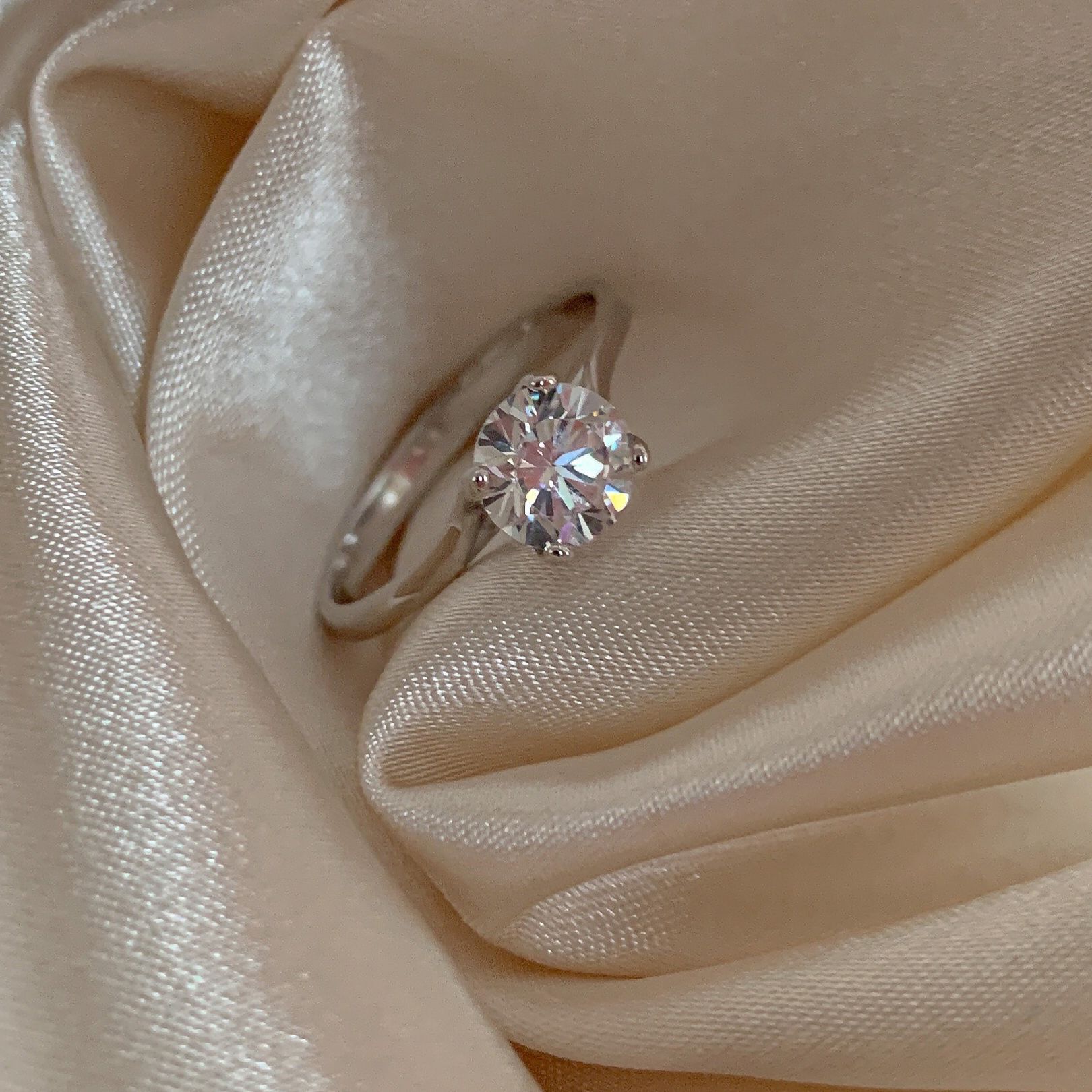
Once the lab-grown diamond reaches the desired size, it's time to unleash its true potential through precise cutting. Expert gem cutters examine the rough diamond carefully, considering its natural shape as well as any inclusions, to determine the best way to cut it for maximum brilliance, scintillation and beauty. The same type of cutting is done for both natural and lab diamonds.
Cutting a diamond is a delicate and precise art, where skilled craftsmanship is required to unleash a diamond's full sparkle. The angles and proportions must be perfect, allowing light to reflect and refract within the diamond, creating that mesmerizing play of colors we all adore. A lab created diamond that is cut properly, portrays the same incredible sparkle we all have come to know from mined diamonds.
Here’s a fun fact for you! Do you know the only substance in the world that is hard enough to cut a diamond? The answer is...another diamond! Diamonds are one of the hardest materials on Earth, ranking a 10/10 on the Mohs Hardness Scale.
Step 5: Polishing and Faceting
After the initial cutting, the lab diamond then goes through a meticulous polishing process to enhance its brilliance even further. Tiny, flat angles on the diamond, known as facets, are created on the diamond's surface, allowing light to bounce around inside and create that stunning sparkle we all know and love.
This is where the gem cutter's expertise shines through (pun definitely intended). The number, size, and placement of facets are crucial in determining the diamond's final beauty and fire (the ability of a diamond to reflect white and colored light).
A well-cut lab-grown diamond can have just as much brilliance as that of a natural diamond, making it an excellent choice for those seeking a beautiful, cost effective alternative to a natural diamond.
Step 6: Grading and Certification

Just like natural diamonds, lab-grown diamonds undergo strict grading and certification processes to evaluate their overall quality. Leading gemological laboratories assess factors such as color, clarity, carat weight, and cut (just like a mined diamond) to determine the diamond's overall grade.
Reputable certifications, such as those from the Gemological Institute of America (GIA) or the International Gemological Institute (IGI), provide buyers with confidence in their purchase and assure them that the lab-grown diamond they are acquiring meets high-quality standards.
Step 7: Just Kidding, All Done!
From the tiny diamond seed (with a width thinner than a human hair) to a breathtaking faceted gemstone, each step in this remarkable process showcases the dedication and craftsmanship involved in creating show stopping alternatives to natural, mined diamonds.
Lab-grown diamonds offer a brilliant option for those who seek the elegance and beauty of diamonds without the environmental and ethical concerns associated with traditional diamond mining.
Whether you're considering a lab-grown diamond for an engagement ring, a stunning piece of jewelry, or something entirely different, it is important that you know they are just as much a "real diamond" as their mined counterpart. These diamonds are truly a product of scientific marvel. Regardless of the type of diamond, you are getting a diamond made of pure carbon that will serve you and your loved one well.
I hope you enjoyed this blog as much as I did writing it. Until next time, keep exploring the fascinating world of diamonds and gemstones, and remember, diamonds are not only a symbol of forever but are also a product of human innovation and constantly advancing technology!



















































